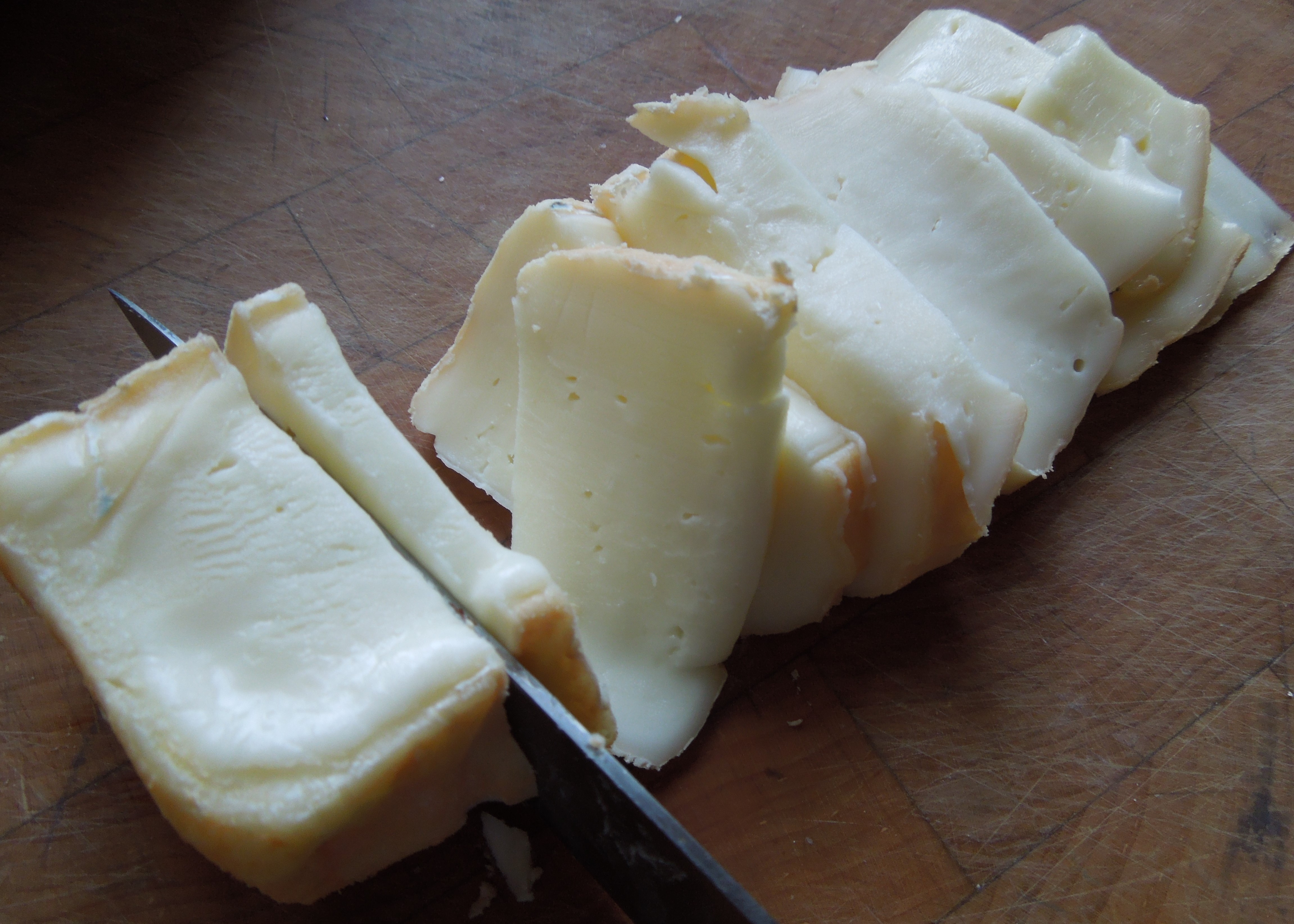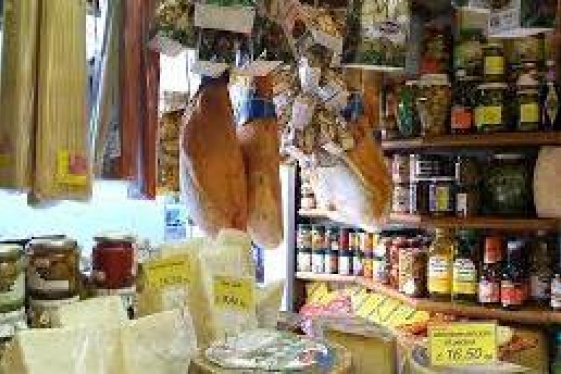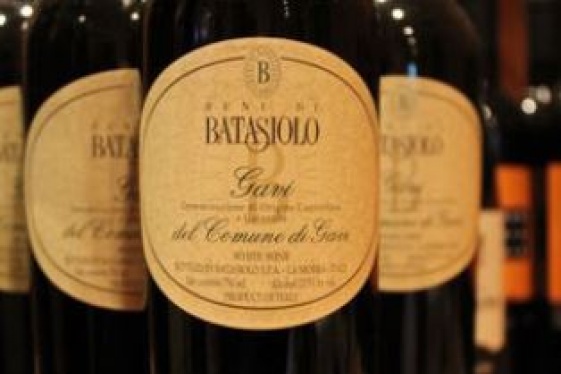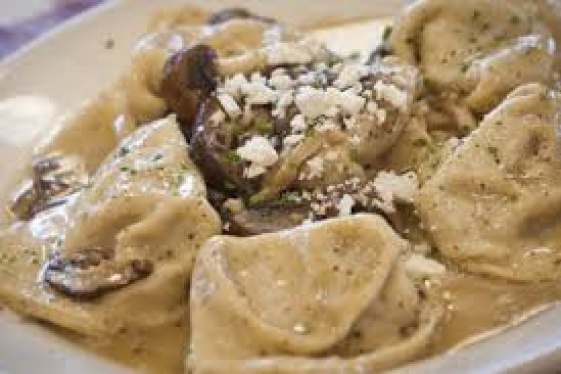

Taleggio is a cheese with ancient origins, from before the 10th century. Documents dating to the 1200s contain references to its trade and barter, together with other cheeses. Its name is taken from its area of origin, Val Taleggio, in the province of Bergamo, which covers an area of over 80 km2 on the orographic right side of the river Brembo.
The inhabitants of the valley, needing to preserve excess milk, began to produce cheese, which, once it had matured in the “caves” or cheese dairies of the valley, could be bartered for other products or sold. As the consumption of Taleggio continuously increased, production gradually spread throughout the Po Valley, where many small and medium-sized cheese dairies began to operate and were able to combine the traditional production techniques with various different technological innovations over its almost thousand-year history.
The production of Taleggio, which was initially carried out on a seasonal basis, now continues the whole year round, not only in the mountains where it originated historically, but also in several artisanal dairies and large-scale cheese factories on the plain. Taleggio has been recognised as a Denomination of Origin (DO) and Protected Designation of Origin (PDO) cheese, confirming its link with tradition.
The Product
Each Taleggio cheese weighs between 1.7 and 2.2 kg and has a square slab shape with sides of 18-20 cm. The rind is thin, soft in consistency, and has a natural pinkish colour, with a characteristic presence of grey and light sage-green mould.The paste is uniform and compact, softer beneath the rind, and more crumbly in the centre of the form when aged.
The colour of the cheese can vary from white to straw yellow, and it may have a few small holes. The flavour is sweet, with very faint sourish traces, slightly aromatic and at times has an aftertaste of truffles; the smell is distinctive.”
Production
When the milk arrives at the dairy, it is stored in refrigerated tanks. Whole cow’s milk is used, and can be either raw or pasteurised. The milk is heated to 32-35°C for curdling and a starter is added to it containing Lactobacillus bulgaricus and Streptococcus thermophilus, which have an acidifying and flavouring effect. The rennet used must be exclusively liquid animal rennet obtained from calves, and the use of substitutes obtained from genetically modified micro-organisms is not permitted.
The curds are broken up in two stages: the initial, coarse stage is followed by a rest period of 10-15 minutes, so that the curd mixture, which begins to drain, can acquire greater consistency. In the second stage, the solid mass is broken up into lumps the size of hazelnuts. Once the curds have been broken up, they are removed and uniformly distributed in special 18-20 cm square moulds, in which the whey separation begins. The moulds are placed on slightly inclined drain tables to facilitate the drainage of the whey.
The heating stage then follows: the curds mixed with whey begin to form cheese, the paste is acidified and the expulsion of the whey is completed. This phase lasts from 8 to 16 hours, at a temperature of between 22 and 25°C. For technical reasons, the cheese is stamped with the mark of origin during heating, on one of the occasions in which it is turned. The trademark, made from a plastic food-safe material, is affixed on one of the flat faces of each form.
This is followed by salting, with a dry process still used in traditional small-scale production, with salt sprinkled on the surfaces and the sides of the cheese, while in industrial production, the forms are immersed in a brine solution at a temperature of about 10°C for 8-12 hours.
The last stage is ageing: Taleggio is normally left to age on wooden boards in compartments that perfectly replicate the environmental conditions of the natural caves in which the cheeses were originally matured, for at least 35 days.
During ageing, the forms are turned and sponged down about once a week, using only water and salt, in order to keep the rind moist, prevent the formation of undesirable moulds and allow the development of the specific moulds and yeasts that produce the classic rosy colour. The rind is edible.
The presence of mould on the rind facilitates the centripetal maturation (from the outside towards the centre) of this cheese. The enzymes produced by the microflora in the rind help to the paste to mature, making it soft, flavourful and more digestible.
The Local Area
Because Taleggio is a DPO cheese, it can only be produced in certain specified areas, using milk that comes exclusively from milking parlours in the same areas and subject to a special monitoring system. It is produced and matured exclusively in the provinces of Bergamo, Brescia, Como, Cremona, Lecco, Lodi, Milan and Pavia Lombardy; in the province of Novara in Piedmont; and in the province of Treviso in Veneto.
Recognition
Consumers can recognise the original product by the four-circled mark of origin on the rind, which is stamped on the flat face of the Taleggio cheese and is still visible when the Taleggio is sold in portions. The wrappers used for Taleggio cheese must display the “cloverleaf” logo together with the product identification number.
In addition to the logo on the wrappers and the European PDO symbol, there is also the name Taleggio, followed by PDO. As with all Italian protected designations, there are also the words “Certified by an MiPAAF accredited Control Body”.
Consorzio Tutela Taleggio
You may be interested
-
‘Fuggedaboudit’ the motto of new Italian del...
By Kimberly Sutton Love is what brought Tony Nicoletta to Texas from New York.The transpl...
-
1st Annual Little Italy Cannoli Tournament
Little Italy San Jose will be hosting a single elimination Cannoli tournament to coincide...
-
A Week in Emilia Romagna: An Italian Atmosp...
The Wine Consortium of Romagna, together with Consulate General of Italy in Boston, the Ho...
-
An Italian American Feast For Family Reunion...
Hey, come over here, kid, learn something. ... You see, you start out with a little bit of...
-
Buon Appetito! Unique Italian dining at Ragú...
There's something to be said for having your food prepared tableside. Guacamole tastes fre...
-
Chef Carmelo Mauro to host Beni Batasiolo Wi...
Fiorenzo Dogliani, owner of Beni di Batasiolo, will join Carmelo Mauro for an exclusive wi...
-
D'Amico's Italian Market Café expanding to K...
The popular D'Amico's Italian Market Café, a 16-year-old mainstay of Rice Village, is head...
-
Eat Drink And Be Merry IACL Christmas Party
Sunday December 14, 5.30 pmSole Mio - 8657 S Highland Dr, Sandy (Utah) 84093 The Italian...










